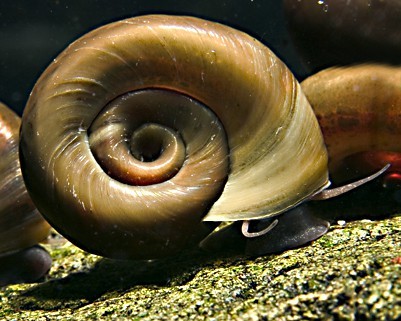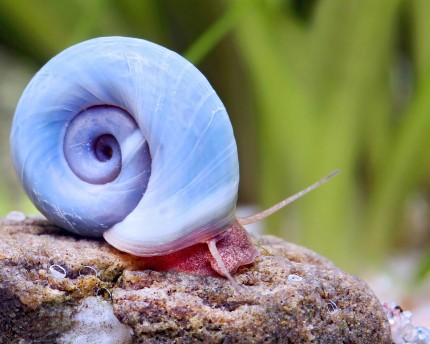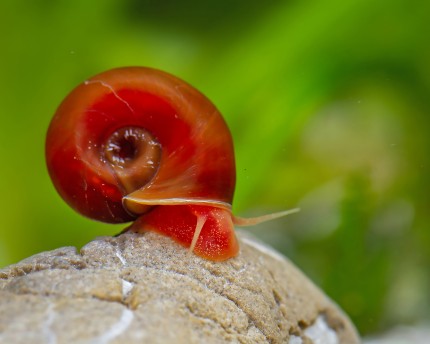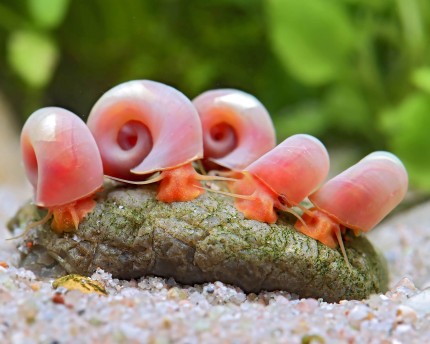Colorful ramshorn snails in the aquarium
Ramshorn snails in the aquarium
In the aquarium, post horn snails have long since ceased to be regarded as a dreaded pest, but rather as attractive, deliberately used co-inhabitants. They are relatively undemanding and can be kept in nano aquariums or snail vases from 8 to 10 liters upwards. But they are also useful helpers in community or invertebrate aquariums, taking care of algae deposits as well as food remains, carrion and dead plant parts. If you notice too much reproduction, this is always because the snails find too much food. A check of the daily food quantity and the aquarium hygiene is then in any case announced.
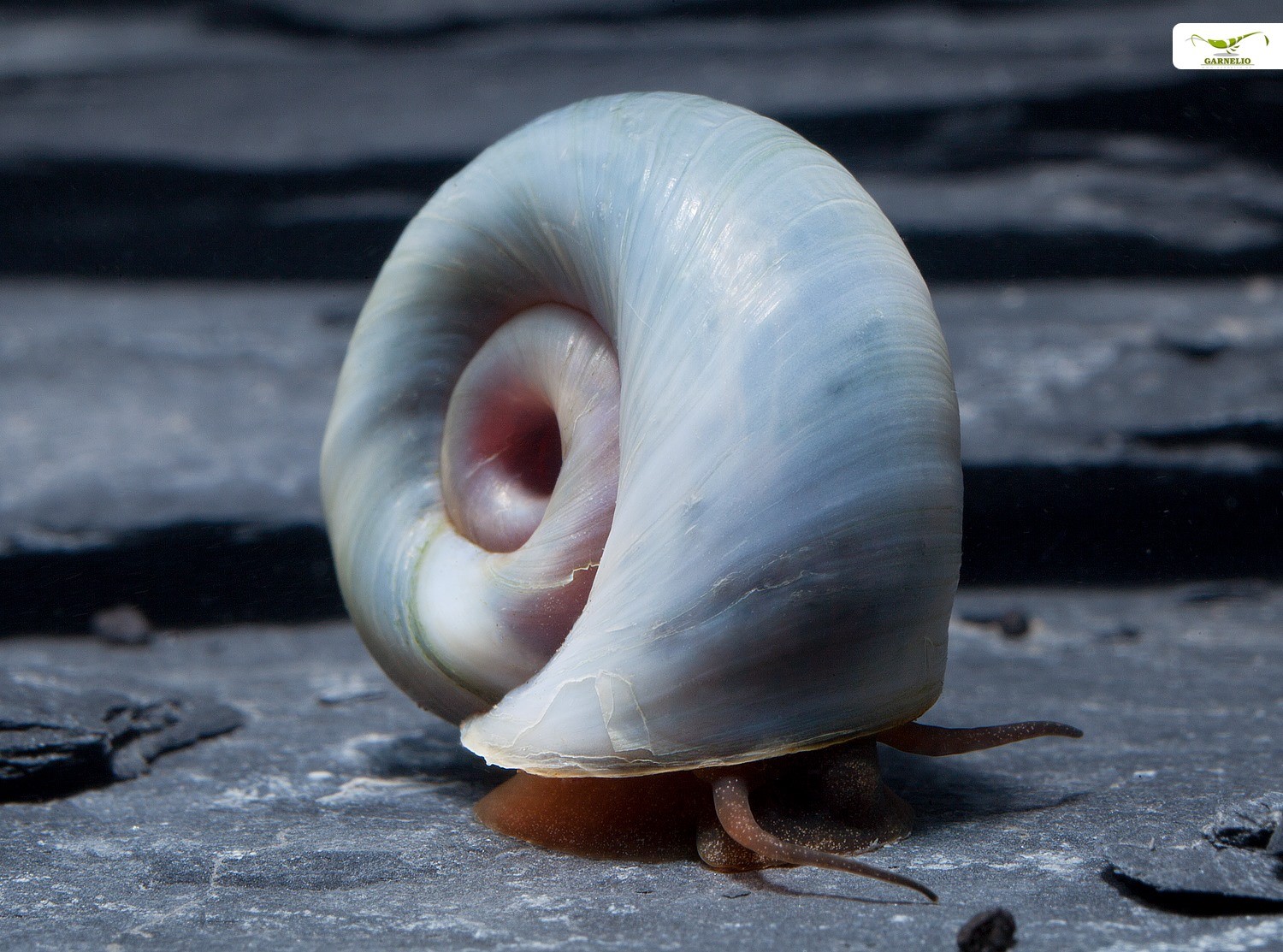 The blue post horn snail - Planorbella duryi is one of the most popular aquarium snails.
The blue post horn snail - Planorbella duryi is one of the most popular aquarium snails.
Socialization of post horn snails
If you want to keep the animals in a community tank, you should make sure that the fish do not eat snails and do not pick at them curiously. For crayfish and crabs post horn snails are just as for predatory snails and large-armed shrimps a found food. The socialization with dwarf shrimps is possible without any problems. However, the shrimps should be fed sufficiently with proteins, otherwise they will cover their needs with one or the other juvenile snail.
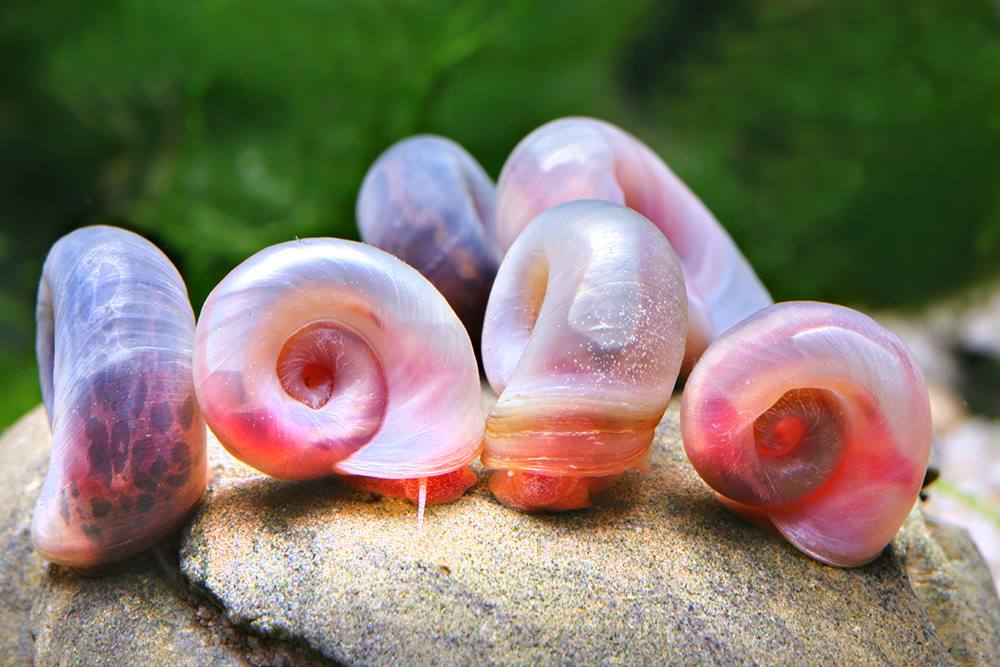 In the aquarium, post horn snails have long since ceased to be regarded as a dreaded pest, but rather as attractive, deliberately used co-inhabitants.
In the aquarium, post horn snails have long since ceased to be regarded as a dreaded pest, but rather as attractive, deliberately used co-inhabitants.
Planorbella duryi - Planorbarius corneus
The common post horn snails in aquaristics do not belong to the European species Planorbarius corneus, but have been identified as the Small Post Horn Snail (Planorbella duryi). Planorbarius corneus has a rather dark shell and a dark, rarely a red body. The shell is not smooth like Planorbella duryi, but has distinct growth lines. Planorbarius corneus grows to 4 cm, twice the size of Planorbella duryi. Posthorn snails are lung breathers, they do not have gills. Therefore they always need access to the water surface, otherwise they suffocate.
Origin of the lesser ramshorn snail
Originally the Small Posthorn Snail comes from Florida, therefore it feels very comfortable in warmer aquariums in the room. It does not go after healthy plants - with the exception of the very soft-leaved Pogostemon helferi, which can be nibbled even if it is perfectly healthy and vital.
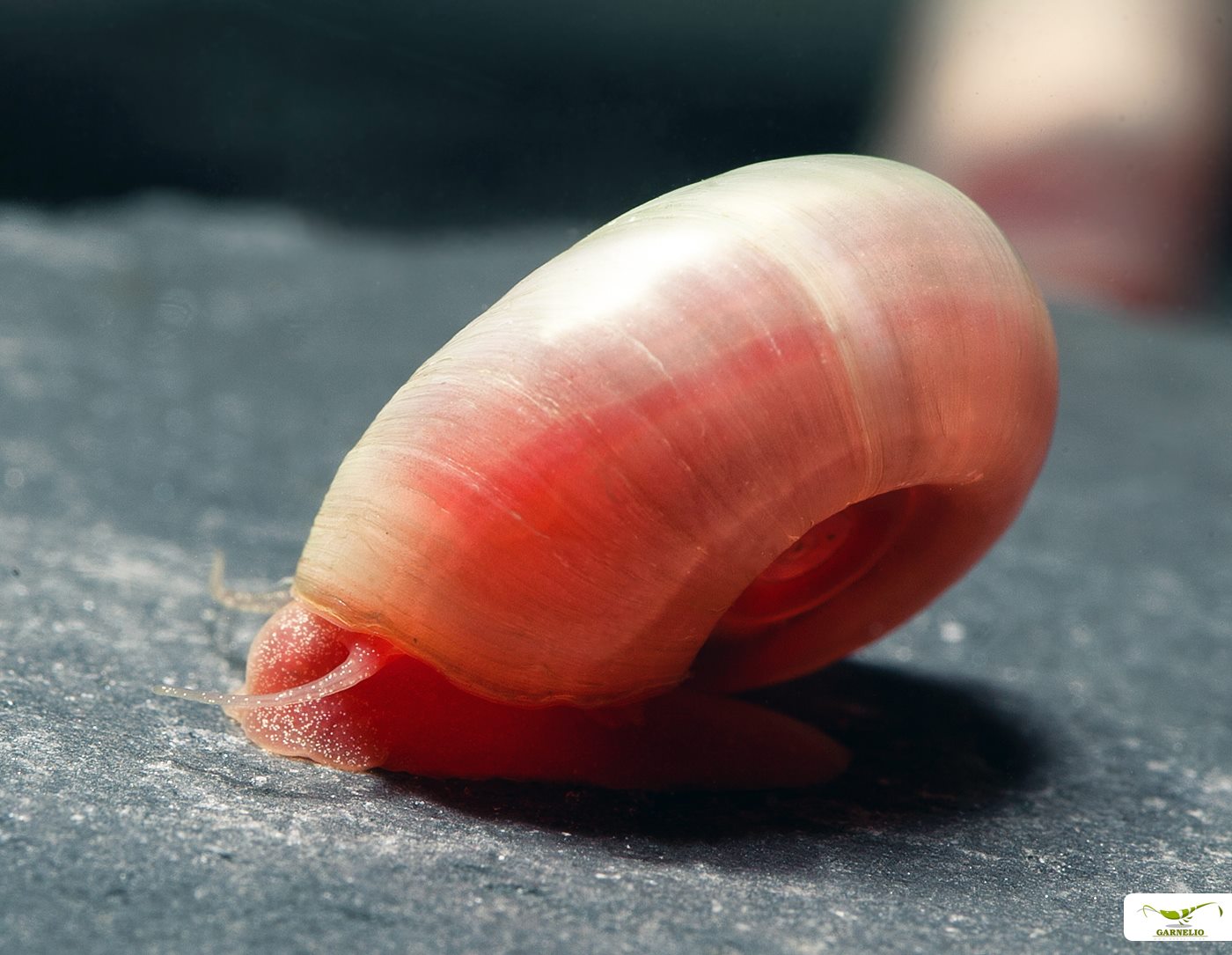 Posthorn snails are great residual exterminators eating dead plant parts and animal carcasses before they pollute the water. Color form: Pink ramshorn snail
Posthorn snails are great residual exterminators eating dead plant parts and animal carcasses before they pollute the water. Color form: Pink ramshorn snail
Coloration of the post horn snails
The natural form of the Small Posthorn Snail is brown, but in juveniles the mottled mantle tissue shines through, giving them a leopard check. Meanwhile post horn snails are bred in very attractive colors. Basically there are animals with white and with yellowish shell. The body color shimmers through and then gives the shell the respective hue. The yellowish shells of snails with a red body appear reddish-orange, if the shell is white and the body red, the very popular pinkish-pink color form comes into being. If the body is dark, the white shell shimmers blue. Especially with the blue ramshorn snails you can still see the leopard checkering of the wild form in some juveniles. New color forms develop in exactly the same way: The differently intensive body color mixes with the shell color to a completely new shade. Especially in mixed populations new variations can be found.
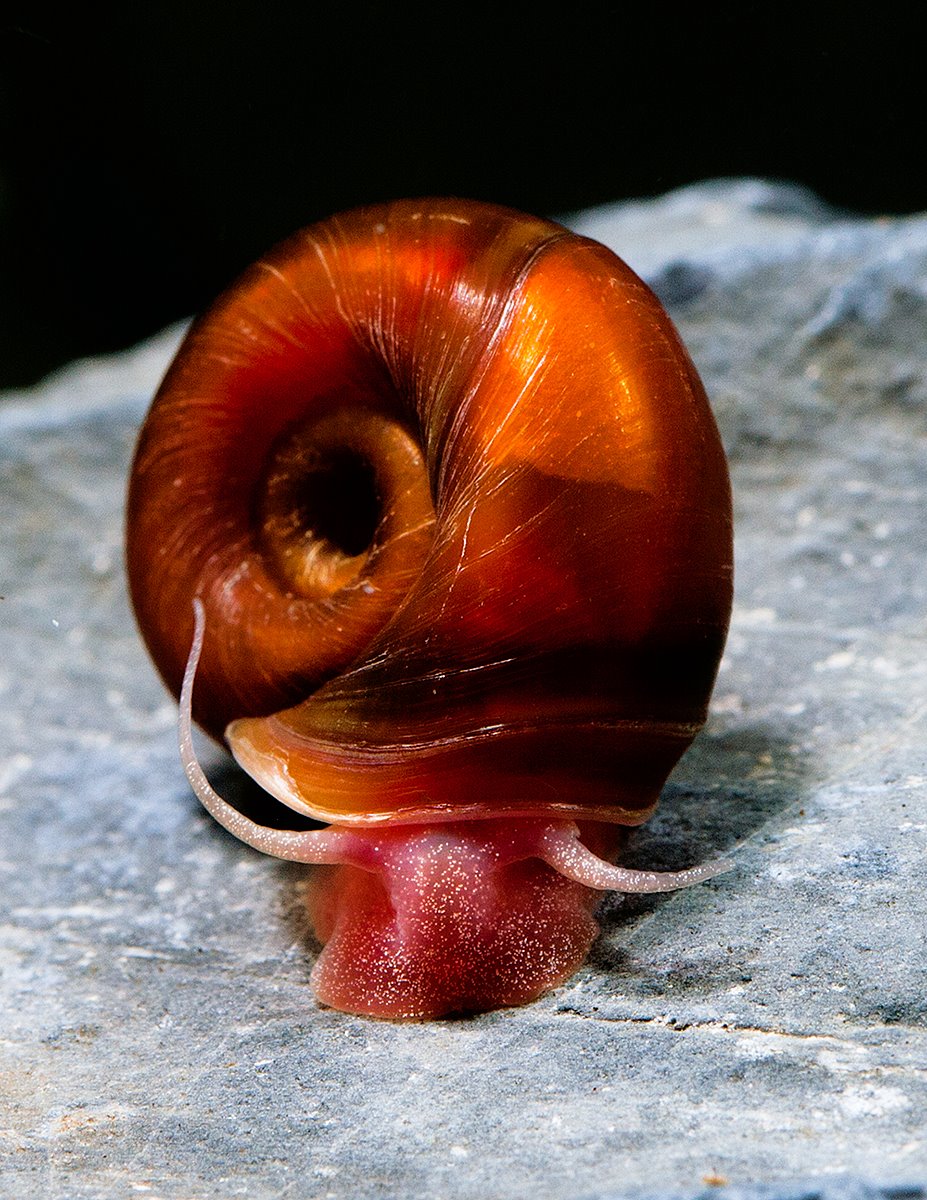 Post horn snails are very active snails that are constantly searching for food.
Post horn snails are very active snails that are constantly searching for food.
Mineral balance - prevent shell damage
Generally post horn snails need rather hard water, because they do not only take up the lime for shell construction with the food, but can also get it out of the water via their mantle tissue. If the total hardness (GH) is below 10, a special snail food is recommended, which contains all substances the snail needs to prevent shell damage. In acidic water, the shells can otherwise be severely attacked, which can be seen in white opaque discoloration. The snail shell is surrounded by a waxy skin, which provides additional protection against the effects of water. Once it is destroyed, it does not grow back. Smaller holes in the shell can be repaired by the snail from the inside by forming lime - only the color is then different.
If the food supply is right, there is actually nothing that could stop the post horn snail from reproducing. Soon you can see the watchglass-shaped, flat, relatively firm clutches on plants and on hard surfaces, from which the young snails hatch after about a week.
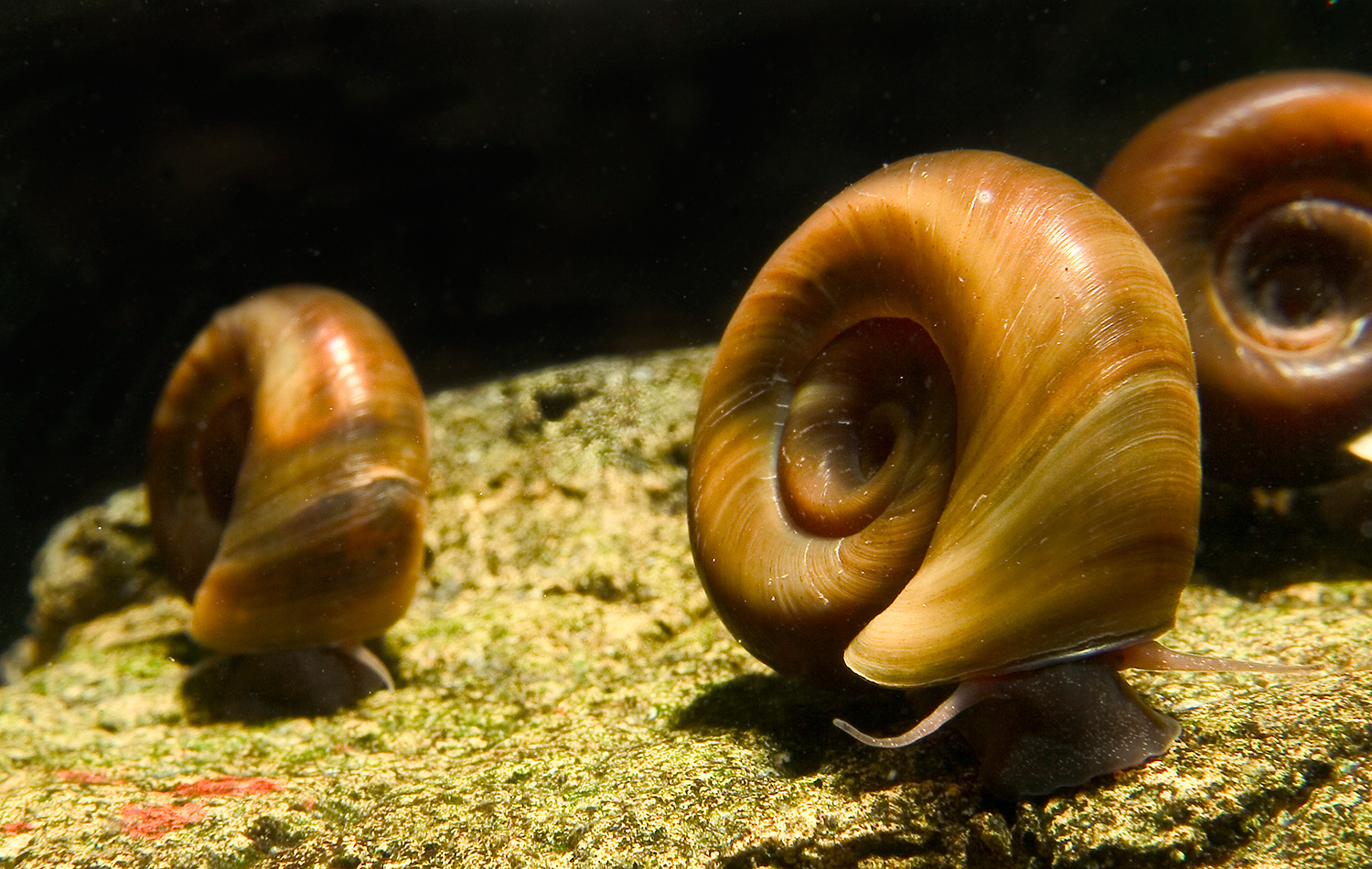 The brown natural form of the small ramshorn snail Planorbella duryi
The brown natural form of the small ramshorn snail Planorbella duryi

